Search Images
Browse Content (p. 486)
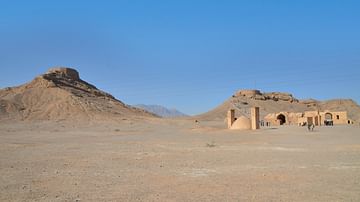
Image
Zoroastrian Towers of Silence in Yazd
The Towers of Silence were used in Zoroastrianism. In the Zoroastrian tradition, corpses were left out exposed to the elements on structures commonly called Towers of Silence to prevent them from being contaminated by demons. Once the body...
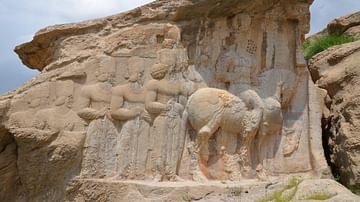
Image
Equestrian Relief of Shapur I
Sasanian relief in Naqsh-e Rajab (Iran) depicting Sharpur I (r. 240-270 CE) on horseback (identified by a trilingual inscription) followed by a group of nine people. Naqsh-e Rajab is the site of four limestone rockface inscriptions and rock-cut...
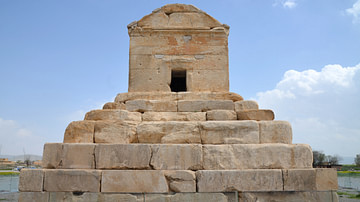
Image
Tomb of Cyrus the Great, Iran
The Tomb of Cyrus the Great is the final resting place of Cyrus II (d. 530 BCE), the first king of the Achaemenid Empire. It is located in Pasargadae, an archaeological site in the Fars Province of Iran.
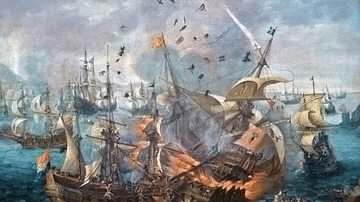
Image
1607 Battle of Gibraltar by van Wieringen
A 17th-century painting by Cornelis Claesz van Wieringen showing the 1607 battle of Gibralatar. Here a Dutch galleon is ramming the Spanish galleon flagship of Don Juan Alvarez. The flagship was sunk when its powder magazine exploded. (Rijksmuseum...
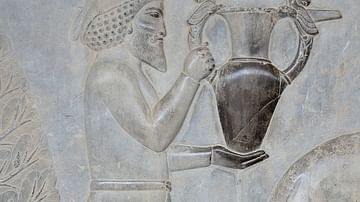
Image
Armenian Tribute Bearer from Persepolis
Relief on the southern wall of the east stairway of the Apadana in Persepolis depicting an Armenian tribute bearer carrying a metal vessel with Homa (griffin) handles. 5th century BCE.
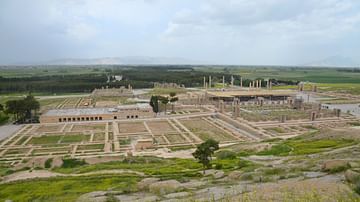
Image
Panoramic View of Persepolis
A general view of Persepolis, the ceremonial capital of the Achaemenid Persian Empire, in Persia (Persis/Fars), southwestern Iran.
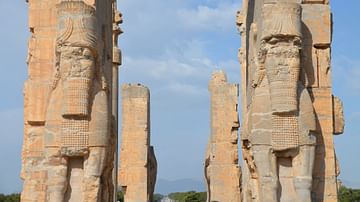
Image
Gate of All Nations, Persepolis
The east side of the Gate of All Nations (also known as the Gate of Xerxes) in Persepolis (Iran), built by Xerxes I (r. 486-465 BCE). The gate was flanked by two monumental statues of lamassu, winged bulls with human heads, who were thought...
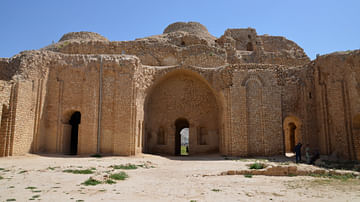
Image
Palace of Ardashir, Iran
The palace of king Ardashir I (r. 224-240 CE), the founder of the Persian Sasanian Empire, was built around 224 CE opposite the city he had founded, Ardashir-Khurrah (“Glory of Ardashir”), on the bank of the western branch of Tangab river...
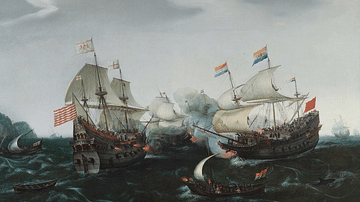
Image
English & Dutch Galleons in Combat
A 17th-century painting by Hendrick Cornelisz Vroom showing English and Dutch galleons in combat in 1605. Both ships are typical of the Spanish galleon type. (National Maritime Museum, Amsterdam)
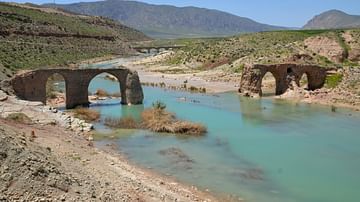
Image
Sasanian Kavar Bridge, Iran
Early Sasanian bridge (Kavar bridge) spanning the Qara Aqaj River near Firuzabad in Iran. It was built in the 3rd century CE, possibly by Romans who were taken captive during the campaigns of Shapur I (r. 240-270 CE).